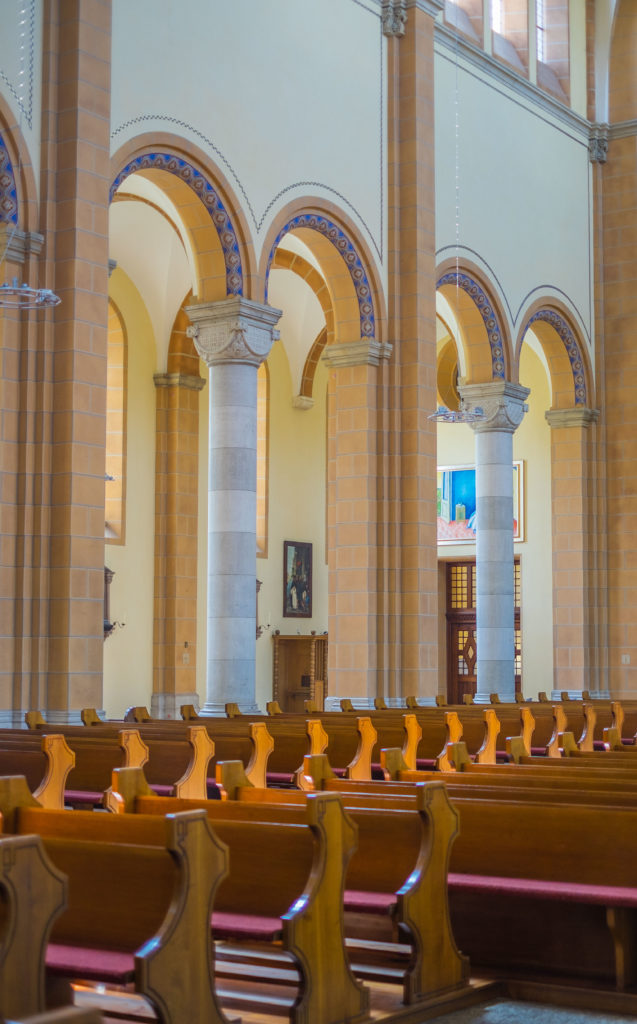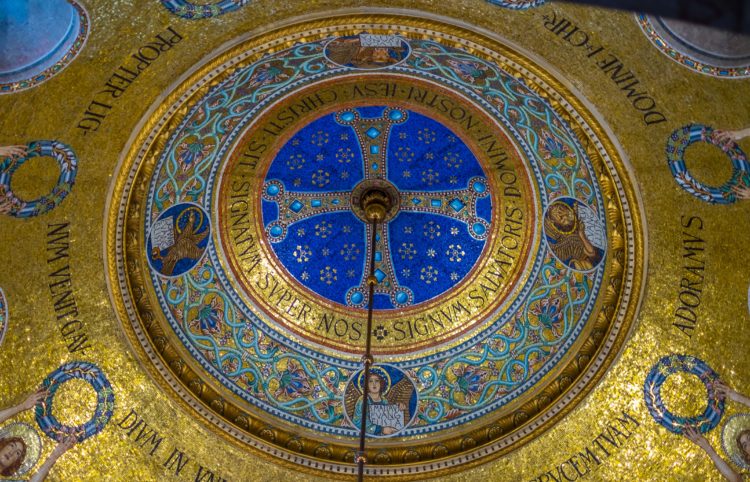In August – while everyone (including me!) is away on vacation –I’m posting a shorter article each week with a look at a specific destination or aspect of life in the deep heart of France. This week: how Romanesque architecture (which dominates the medieval buildings of central France) manifests itself in a modern location far away, at the Kaiser Jubilee Church in Vienna. Regular “feature-length” posts will resume after vacation.
Romanesque Architecture in the Deep Heart of France
I’ve written often about my love for the Romanesque architecture in central France. It’s visible in the big “showcase” basilicas in Clermont-Ferrand, Brioude, and Issoire, but you can see it, too, in many smaller towns – St. Menoux, St. Saturnin, Charroux, Lavaudieu, among others.
They all have in common the aesthetic features that marked the ‘state of the art’ in buildings of the 10th, 11th and 12th centuries across Europe. High rounded arches work to pull your eyes up in the direction of heaven, and “galleries” in the side walls of semi-circular arches like those you’d see in a Roman aqueduct or buildings like the Coliseum. Massively thick walls and stone piers support the weight, so there’s no need for ‘flying buttresses’.

Many of the walls in these buildings were brightly painted (though very few examples of these paintings remain). The columns that bear the weight of the vaulted roof were often topped by carved capitals that tell a story – sometimes biblical, sometimes an earthier reminder of human failings.
A modern example in Vienna
In a well-executed Romanesque design, the effect of all these elements can be breathtakingly beautiful. So when our river cruise docked in Vienna this spring next to a massive hulk in this particular style, we had to check it out and compare it with our experiences in France!
It turns out that the church in Vienna is modern – built between 1898 and 1910. That accounts for its enormous size compared to many of the buildings in the Auvergne, the cumulative effect of 700 years of progress in materials and engineering.

A church with 3 names
This is a church with three names:
- Its “proper” Catholic name, the Church of St. Francis of Assisi
- Its “honorary” name, the Kaiser Jubilee Church (which in German is a mouthful – Kaiserjubiläumskirche!) That’s because the whole project was built to celebrate the 50th anniversary of rule of Emperor Franz Joseph I. This church was based on a design by Victor Luntz, the architect who won a competition staged by the people planning the commemorative events.
- The name used by many Viennese locals, the Mexico Church (because it sits in the middle of Mexikoplatz, a public square honoring Mexico because it was one of only 2 countries in the world to protest when Nazi Germany moved in to annex Austria during World War II)


Like its medieval counterparts in the Auvergne, the interior of the Kaiser Jubilee Church seems almost austere, especially in this part of Europe where heavy Baroque and Gothic styles dominate in public buildings. It shares the rounded arches and side galleries characteristic of Romanesque buildings everywhere, but our overall impression was of a very simple, almost plain interpretation of the style…
An incredible Art Nouveau chapel
… until we came to the incredible Elisabethkapelle (Elizabeth Chapel)! It’s a spectacular add-on alongside the main body of the church, finished in 1907 and consecrated in 1908. Here you’ll find the explosion of bright colors you might have seen in the side chapels of a medieval church in central France, but with this twist: Elisabethkapelle glitters with gold-leafed mosaic tiles in a brilliant display of Art Nouveau style


The chapel honors the Empress Elisabeth of Austria, wife of Franz Joseph I; she was assassinated by an Italian anarchist in 1898. Elisabeth was one of the early patrons of the Red Cross, so that organization raised a significant amount of the money required to decorate this extraordinary work.


Do you have a favorite example of Romanesque architecture from your travels around Europe? Please tell us about it in the comments section below! And please do share this post with others by clicking on one (or more!) of the social-media buttons before you leave.




I really enjoyed reading this short story in Vienna and how it is relative to France and Mexico. Remarkable.
Thanks, Chema – I’m glad to hear from you!
Wow, this is just beautiful! Thank you for sharing it with us.
Thanks very much, Gwyneth!